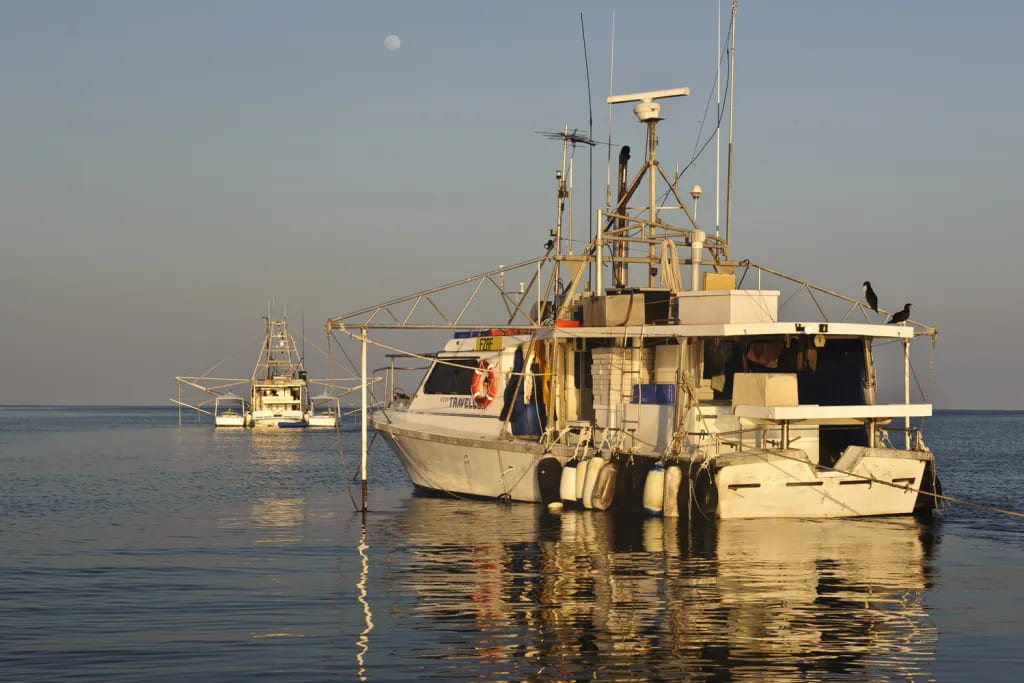
The Bramble Reef boundary is a critical geographic feature located off the coast of Australia. This boundary defines the limits of a vibrant marine ecosystem, providing a unique habitat for various species while also playing an essential role in local fisheries and tourism. Understanding the Bramble Reef’s boundary is fundamental to marine conservation efforts and can help in sustainable management practices. In this article, we will explore the significance of the boundary, the biodiversity it harbors, and the conservation challenges it faces.
Understanding the Boundary of Bramble Reef

The Bramble Reef boundary is not just an arbitrary line; it is determined by various environmental factors including water temperature, salinity, and depth. These elements create a distinctive habitat that supports diverse marine life, from colorful coral species to vital fish populations. The boundary is often characterized by a transition zone where different water types meet, leading to rich biodiversity. Fish species like snapper and barramundi are drawn to this area, making it an attractive destination for fishers and divers alike. Furthermore, the boundary often serves as a protective zone, helping to shield delicate ecosystems from harmful human activities.
Biodiversity within the Bramble Reef Boundary
The Bramble Reef boundary is a treasure trove of biodiversity, featuring a variety of marine organisms. Below is a list representing some key inhabitants of this ecosystem:
-
- Coral species, including stony and soft corals that provide essential habitat.
- Over 200 species of fish, ranging from larger predatory fish to small reef dwellers.
- Numerous invertebrates, including sea cucumbers and sponges that are crucial for maintaining the reef’s health.
- Marine mammals, like dolphins and sharks, that thrive in the area.
- Unique species of sea turtles that visit the reef for nesting and feeding.
This rich array of life showcases the importance of Bramble Reef as a critical ecological zone. Each species plays a specific role in maintaining the balance of the ecosystem, whether through their feeding habits or by contributing to the complex reproductive cycles of the reef. Research has shown that areas within the boundary also function as nursery grounds for juvenile fish, providing them with shelter and food sources. Thus, the health of the Bramble Reef boundary directly impacts the larger marine landscape.

Threats to the Bramble Reef Boundary
Despite its ecological richness, the Bramble Reef boundary faces several threats. Climate change is one of the most pressing issues, leading to coral bleaching and the degradation of marine habitats. Increased water temperatures and ocean acidification can severely affect coral reefs’ health, which serves as the foundation of this vibrant ecosystem. Additionally, human activities such as overfishing, pollution, and coastal development pose significant risks. These impacts not only harm marine life but can also disrupt the livelihoods of local communities reliant on healthy fishing grounds. Conservation efforts are essential in mitigating these risks and ensuring the long-term health of the Bramble Reef ecosystem.
Conservation Efforts and Future Directions

Conservation initiatives are critical for protecting the Bramble Reef boundary and its unique marine biodiversity. Many organizations are focusing on sustainable fisheries management to ensure that fish populations remain robust while minimizing environmental impacts. Educational programs aimed at raising awareness about the importance of the reef are also pivotal in fostering a culture of conservation among local communities. Additionally, marine protected areas are being established to limit human impact in critical habitats. These efforts, when combined with scientific research and community engagement, can contribute significantly to the restoration and preservation of the Bramble Reef boundary.
Conclusion
The Bramble Reef boundary is more than just a line on a map; it is an intricate ecological zone teeming with life and vital to the health of our oceans. Understanding its significance and the challenges it faces is crucial in informing conservation strategies. With continued efforts, we can preserve this unique marine paradise for generations to come. Protecting the boundary of Bramble Reef not only sustains the environment but also supports local economies and enhances biodiversity—an invaluable investment in our planet’s future.
FAQs
The Bramble Reef boundary is a defined area off the coast of Australia that marks a diverse marine ecosystem, significant for its biodiversity and ecological importance.
2. Why is the biodiversity at Bramble Reef important?
Biodiversity is essential for maintaining the health of marine ecosystems. It ensures stability, resilience, and provides various ecosystem services that benefit both the environment and local communities.
3. What are the main threats to the Bramble Reef?
The primary threats include climate change, overfishing, pollution, and habitat destruction due to coastal development.
4. What conservation efforts are underway for Bramble Reef?
Conservation efforts include establishing marine protected areas, implementing sustainable fishing practices, and conducting educational programs to raise public awareness.
5. How can individuals help in the conservation of Bramble Reef?
Individuals can support conservation efforts by practicing responsible fishing, reducing plastic use, participating in local cleanups, and supporting organizations focused on marine restoration.
